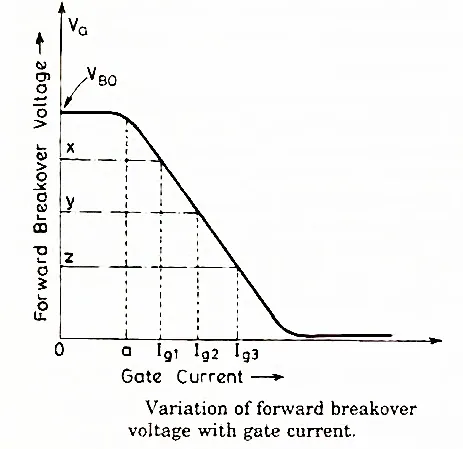Thyristors turn-on methods
Thyristors are electronic devices used for switching and controlling electrical power in various applications such as motor control, lighting control, and power regulation. The turn-on process of a thyristor refers to the method used to trigger or activate the device to conduct current. In this article, we will discuss the different turn-on methods of a thyristors:
- Forward Voltage Triggering
- Gate Triggering
- dv/dt Triggering
- Resistance-Capacitance Triggering
- Light Triggering
- Temperature Triggering
These methods of turning on a thyristor are now discussed one after other.
- Forward Voltage Triggering: In this method, a forward voltage is applied to the thyristor to trigger it to conduct current. The voltage is applied between the anode and cathode terminals of the device until the voltage threshold is reached, at which point the thyristor turns on.
- Gate Triggering: The most common method of triggering a thyristor is through a gate pulse. A gate pulse is a short, high-amplitude pulse applied to the gate terminal of the device, which triggers the thyristor to turn on. The gate pulse can be triggered using various methods, including voltage triggering, current triggering, and light triggering.
- dv/dt Triggering: Another method of triggering a thyristor is through the application of a rapidly changing voltage. This method is called dv/dt triggering and involves applying a high rate of change of voltage to the device, which causes it to turn on.
- Resistance-Capacitance Triggering:Resistance-Capacitance (RC) triggering is a method used to provide a controlled turn-on of thyristors. In this method, a resistor and a capacitor are connected in series with the gate terminal of the thyristor. When the gate voltage is applied, the capacitor begins to charge through the resistor, and once the capacitor voltage reaches the threshold voltage required for turn-on, the thyristor turns on.
- Light Triggering: Thyristors can also be triggered by light. Light triggering involves exposing the thyristor to a light source of sufficient intensity to trigger it to conduct current.
- Temperature Triggering: In some cases, thyristors can be triggered by increasing their temperature. This method is called thermal triggering and involves applying a heat source to the device, which increases its temperature and causes it to conduct current.
Conclusion
Thyristors are a critical component in power electronics applications, and the turn-on method used is determined by the specific application and requirements of the circuit.The choice of the turn-on method depends on the application and the specific requirements of the circuit. Whether it is forward voltage triggering, gate triggering, RC triggering, light triggering, or temperature triggering, the chosen method must provide a controlled turn-on of the thyristor for reliable operation of the circuit.

Comments